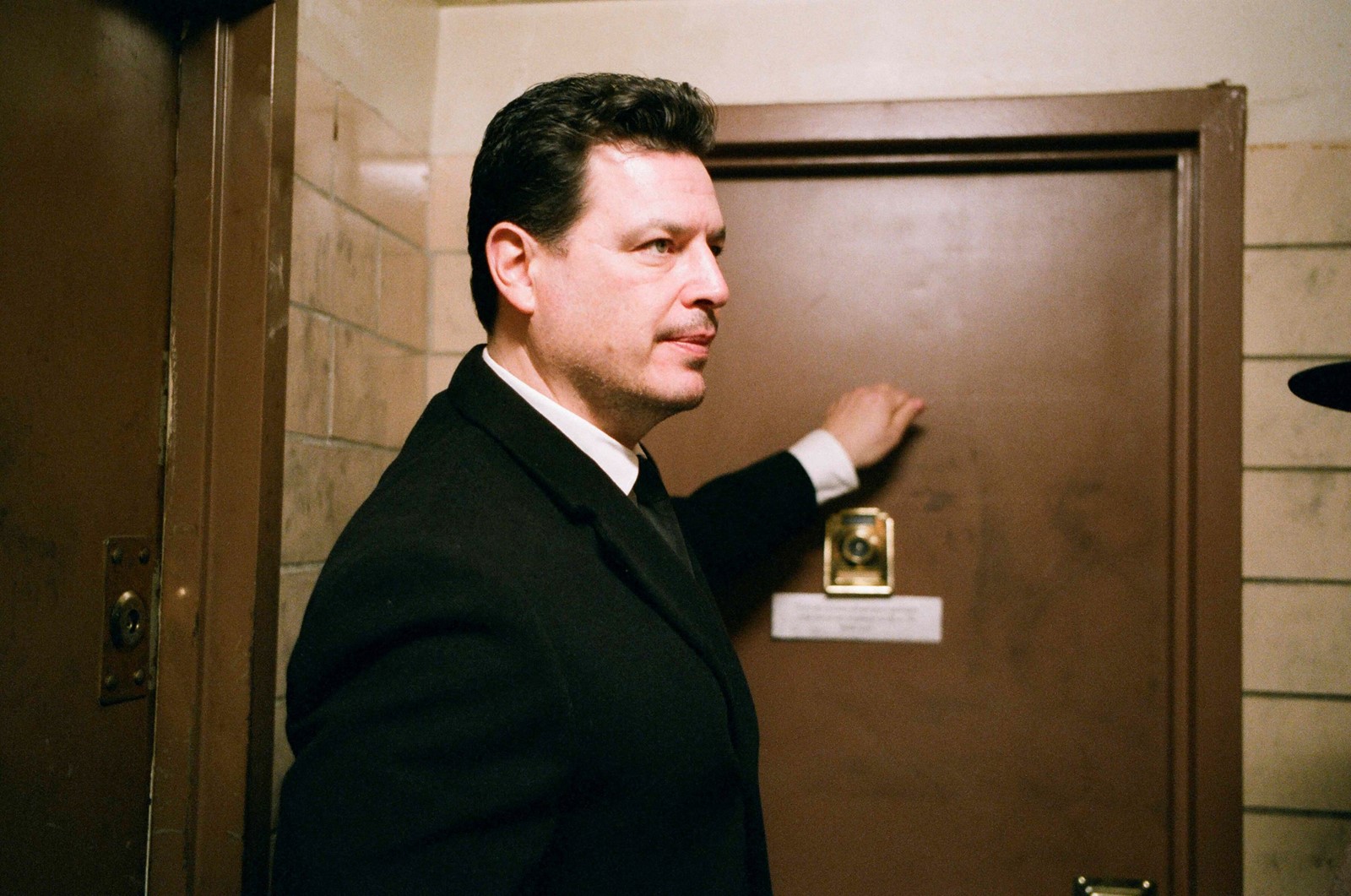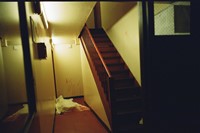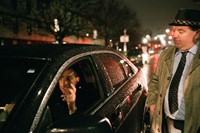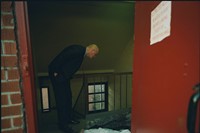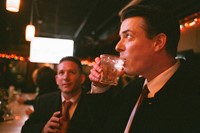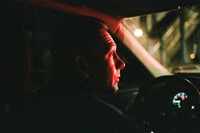“Crime is the ultimate universal topic. Life and death. People are always fascinated by that,” says Theo Wenner, whose new book, Homicide, saw the American photographer follow around the NYPD’s North Brooklyn Homicide squad for two and a half years. First commissioned by Rolling Stone as a photo essay (Theo is the son of Jann Wenner, co-founder of the legendary magazine), the Rizzoli book documents the underbelly of New York – and those who dedicate their lives to policing it – with a cinematic, and at times romantic, eye.
A fashion photographer by day, Wenner has shot famous women like Adele, Kim Kardashian and Bella Hadid in an intimate, off-handed manner; he tackles the New York detectives and crime scenes in Homicide with the same sensitivity, despite the less glamorous subject matter. Grisly images of a bloodied pair of Nike Jordans or the aftermath of an axe murder are interspersed with more delicate shots of sparkling nighttime cityscapes, the stormy New York weather, or the detectives clustering around to eat breakfast and drink at a bar pre- and post-shift.
Wenner is quick to point out that the book has no political agenda. Lured in by making a book about “American mythology and culture”, Wenner insists that the series is “just a study of these detectives.” But, however trendy Williamsburg may have become in the last decade (the book’s foreword points out the disparity between the Brooklyn depicted in this book and that of the one in Lena Dunham’s television series, Girls), Homicide is a reminder that the city is still not altogether safe – especially now, with rising crime rates. As Wenner would run back and forth between big-budget fashion sets to crime scenes in cramped corridors, he was reminded that there is more to the city than meets the eye. “It’s not just downtown, uptown, this neighbourhood, that neighbourhood. There’s worlds within worlds.”
Here, in his own words, Wenner tells the story of shooting Homicide.
“The way I was able to get permission and to get the access was to do it as a news piece. So I pitched it as a photo essay to Rolling Stone, knowing that I wanted to do a book, and that was my way in the door – sneaking in the back. From there, I kept on shooting and turned it into a book.
“I was really interested in the detectives themselves. It’s a portrait. It’s about this specific subculture, the codes and the way that they speak and the way they dress. All those things – the unwritten rules that get passed down from generation to generation. I was kind of blown away by how much they fit the idea that I had in my head, starting with the way they dress. It’s unbelievable. The first time I met them, I was like, ‘Oh my god, you guys actually look like that and smoke cigars and wear hats and overcoats?’
“It’s such a big part of American mythology and culture, and I wanted to know what that looks like now. It’s like how western genre movies are about America; it’s an allegory for something contemporary. You’re looking into a niche culture of America that’s so representative of something bigger. Why do people love watching crime shows? It’s the most reliably popular type of show on television always, for decades. I think it’s because crime is the ultimate universal topic. Life and death. People are always fascinated by that.
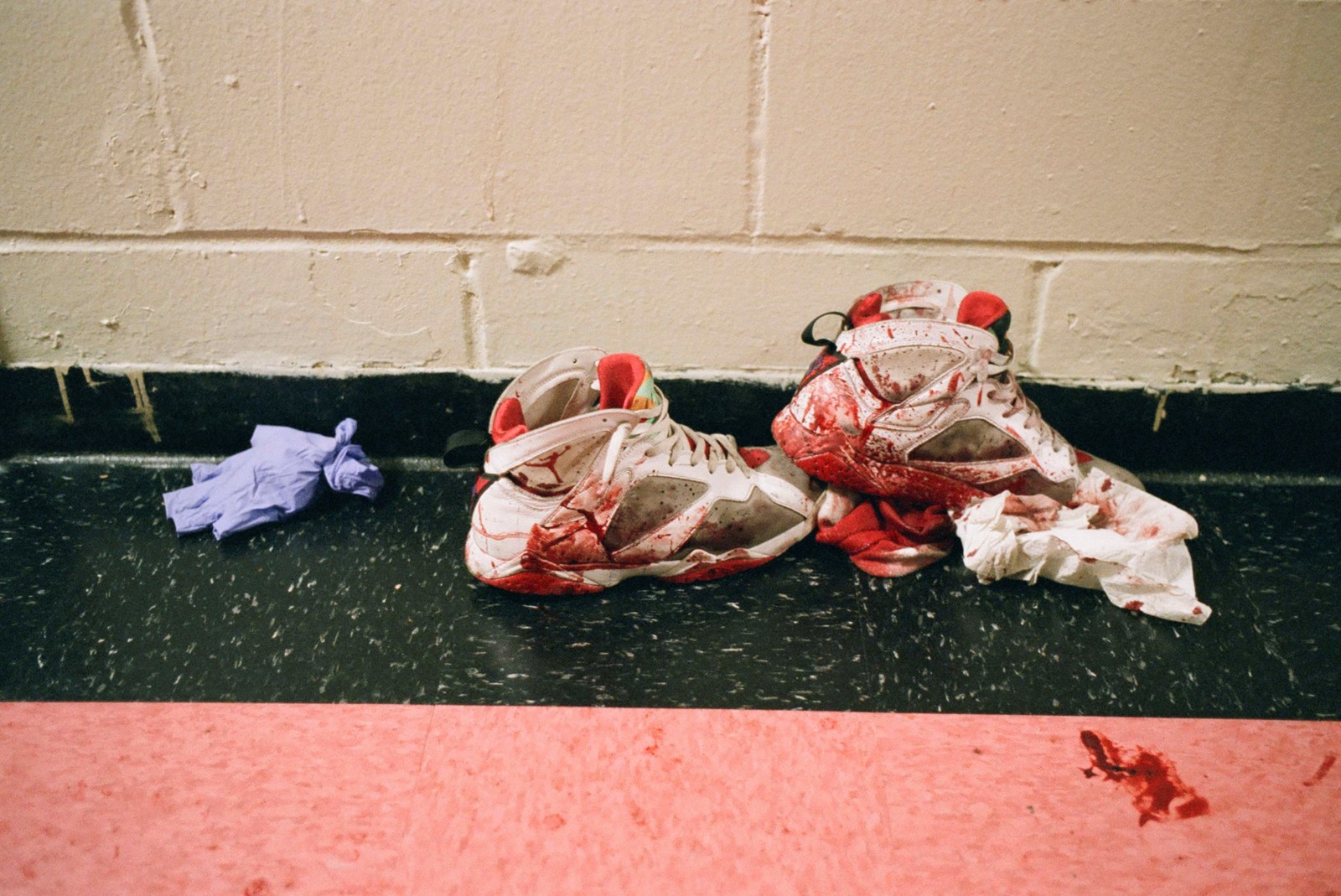
“It’s this funny thing, because they all love crime shows and detective movies. They’ve seen all the great detective films and film noir. It’s like a self-fulfilling prophecy. They’re aware of the way detectives dress in movies. It’s unclear which came first. Forensic Files is constantly playing on the television in the precinct, which I took to be reassuring [laughs]. You want to know that they’re obsessed with true crime and are watching it in the office. They’re passionate about their work.
“They were telling me that it’s actually made their job more difficult because these shows are so popular in America, that when a case goes to trial, the juries are so used to these shows that they all watch, that they’re expecting this mountain of TV show evidence; a perfect crime scene, DNA and blood on the wall. People are expecting that in real life, [but] you don’t always have perfect, crystal-clear evidence to work with. There’s a lot of variables.
“[Seeing my first crime scene] was a day that I’ll never forget. I remember every single detail about that day. First of all, it looks like someone was caught mid-sentence. It’s a moment that is suspended in time, and the expression on the person’s face ... it’s like this moment fixed in time. Everything in that crime scene takes on so much importance when it’s tied to a murder. Everything is important around the victim, everything is part of the story all of a sudden – of this suspended, singular moment. I remember what I was wearing, what the person was wearing, what the room looked like, what the lighting was like, what colour the wall was. I just remember everything.
“You definitely get used to it [seeing dead bodies]. It’s amazing how contagious an energy is, in that situation. If the detectives were freaking out, I’m sure I would’ve freaked out. But they were very calm and filled with purpose. You feed off of that energy. They set the tone, and you feel better because they are so calm.
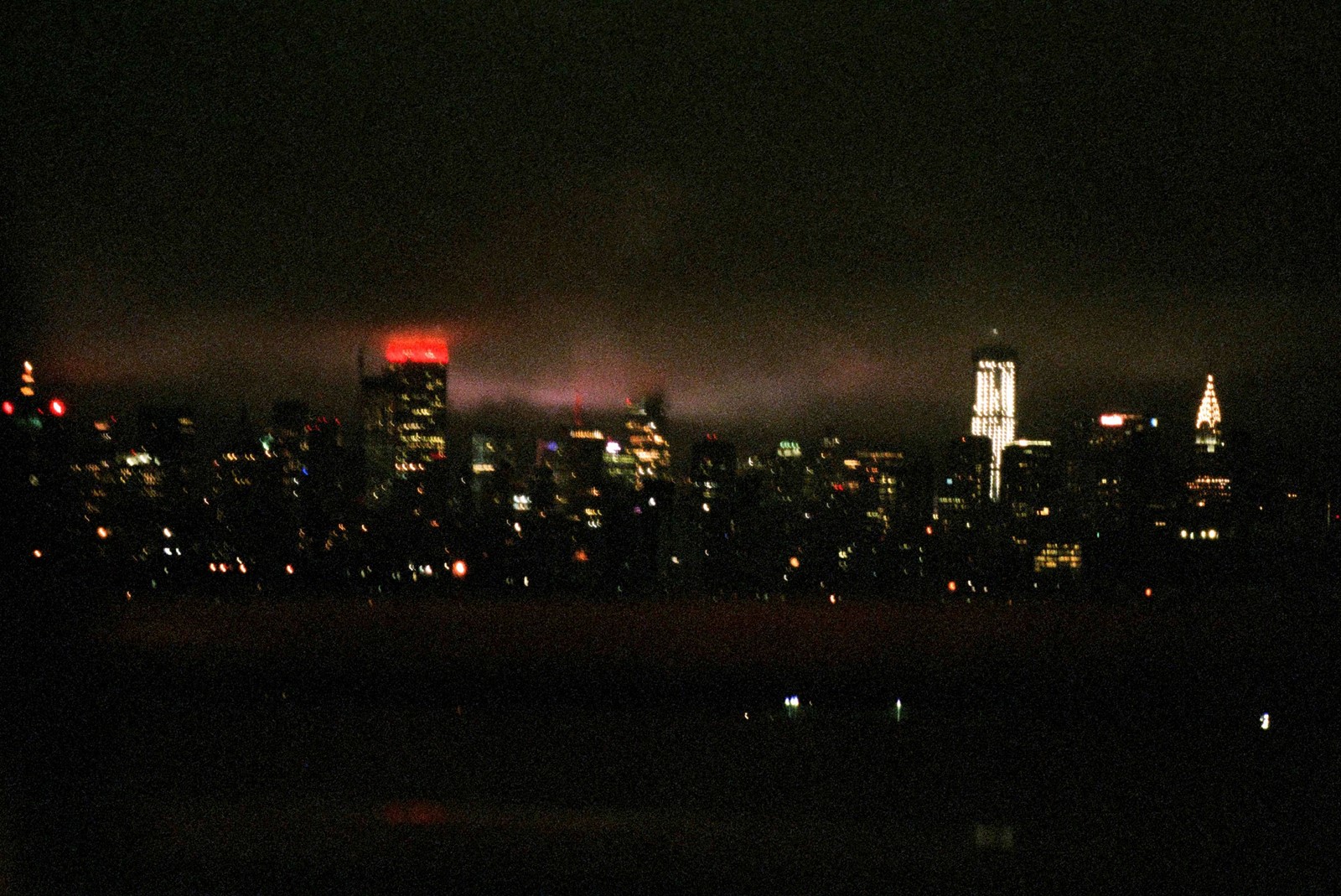
“I wouldn’t necessarily say that violence and murder make for a good subject. It’s an extreme of the human condition, death. What kind of people dedicate their lives to investigating murder? That’s fascinating, the psychology there. What kind of people kill people? It’s an extreme of the human condition and that’s interesting to examine. The stakes are high. It is universal – everyone lives and dies.
“I would be on set shooting an advertising campaign and I would get a phone call or a text message from one of the homicide detectives saying, ‘Theo, there was just a murder at this address. We’re on our way over there. Meet us there.’ And I would literally leave a photo studio and go straight from set to a murder. The contrast was pretty jarring.
“To me, photography is photography. I don’t really distinguish the two. I’m not like, ‘This is my editorial work, this is my personal work, this is my art project.’ I don’t make those distinctions. My work is my work. Of course, you have a different experience when you’re shooting an advertising job versus going in an unmarked police car with detectives to a homicide, but taking pictures is taking pictures.
“There’s so much in the city. It’s not just downtown, uptown, this neighbourhood, that neighbourhood. There’s worlds within worlds. It was an eye-opening experience.”
Homicide by Theo Wenner is published by Rizzoli and is out now.
